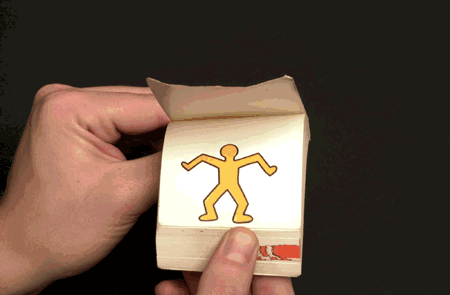20 Different Types of Animation Techniques and Styles
8 : Puppetry Animation
20 Different Types of Animation Techniques and Styles
Types Of Animation
In this post we listed 20 different types of animation techniques and styles. Animation is the process of creating the illusion of motion and shape change by means of the rapid display of a sequence of static images that minimally differ from each other. Animation is all around us, be it your favourite tv commercials, music, movies or even videos you can see the stop motion animation type. Movement creation techniques incorporate the conventional traditional animation and stop motion animation techniques of two and three-dimensional figures, for example, paper set patterns, puppets and clay figures. Keeping Stop motion as the base of all animation, different styles of animation techniques can be used to create the animated sequences. In this post we included 20 different types of animaiton and animtion styles,
Types of Animation Techniques
- Traditional animation
- 2D animation
- 3D animation
- Typography Animation
- Clay animation
- Sand Animation
- Flip book Animation
- Stop-motion animation, etc..see below
1: Traditional animation or Classical 2D animation :
Traditional animation involved animators drawing by hand for each and every frame. If you love the feel of pencils on a paper, then the traditional approach is very fascinating. Traditional animation is creating the drawings one by one on the frame. 2D animation involves creating numerous drawings then feeding into a plastic cells, hand painting them and create the animated sequence on a painted background image.
Traditional Aniamtion Movies : Snow White and the Seven Dwarfs, Peter Pan, and Sleeping Beauty, Aladdin
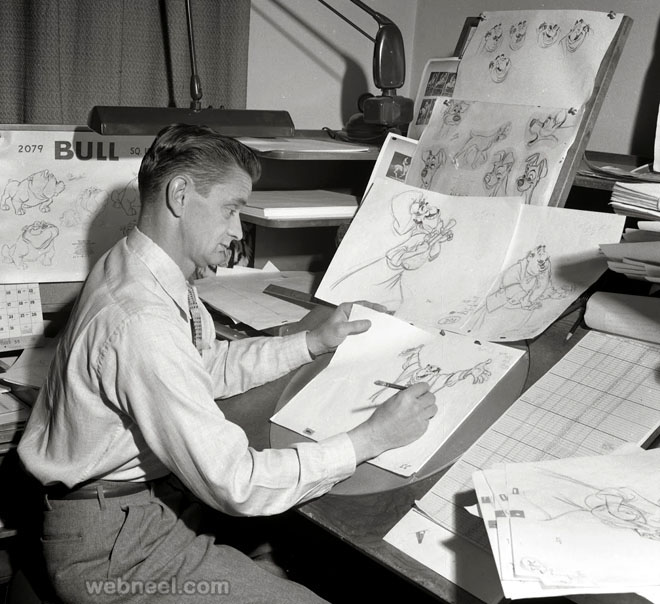
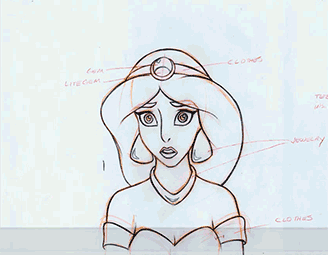
Computer animation - 2D, 3D: The famous Mickey Mouse animation was created using the 2d animation technique.The first 2D animation was called Fantasmagorie, it's a short cartoon made by Emile Cohl. It's shot entirely in black and white, the cartoon is all about a simple stick man in live action. The cartoon is 75 seconds long and it took about 700 different drawings to create. This historic animation was released in 1908. During the 1960s many popular cartoons like the Jetsons and the Flintstones were created using 2d animation.
2 : Digital 2D animation
Creating animations in the 2 dimensional space with the help of digital technologies is known as digital 2d animation. You don’t need to create digital models, you just need to draw the frames. Create 100s of drawing and animating them to show some kind of movement is technically known as digital 2d animation. Using Adobe flash, animators can limit the number of drawings used, which makes them easier to create digital 2d animation. Small variations like changing the color or frame rate can be changed almost instantly, thus making it easier for the animators to work on.
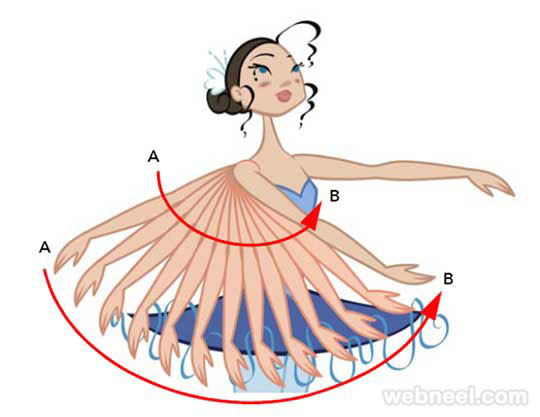
3 : Digital 3D animation
If you are interested in making the unreal characters into a realistic one, then it’s Digital 3d animation. Digital 3d animation characters are much faster to create and they are quite popular in the movie making industry. Using a computer software 3d animated images are used to create many short films, full length movies and even tv commercials and a career in digital 3d animation is highly rewarding. Comparing to 2D animation and the traditional approach, 3d animation models are highly realistic.
4 : Stop-motion animation
Have you ever wondered if a piece of stone can walk or talk, well anything is possible in animation? Using frame by frame animation, physical static objects are moved around and during the post production it is shown in a fluid movement. Stop motion animation has been around ever since the evolution of puppets. There were many movies created using the stop motion method, some of the finest examples are “Fun in a bakery shop” created in 1902.Edwin Porter directed "The Teddy Bears," which was one of the earliest stop-motion animation films. The movie is a short sequence of playing teddy bears, just over a minute in length, which took over 50 hours to animate.
5 : Mechanical Animation
Instead of robotics, machines can be animated by using the mechanical animation technique. Instead of creating the original machine, creating these mechanical animations, allows the animator to understand how the machine works. Explaining the functionality of these machines is quite easy through this kind of animation technique.
6 : Audio-Animatronics and Autonomatronics
Walt disneyimagineering created the trademark audio animatronics which is fitted in its disney theme parks. Otto is a robot which can easily sense a person in a room, converse with them and can also tell if they are happy. Autonomatronics technology is different from Audio-Animatronics technology. Audio-Animatronics technology repeats a pre-programmed show over and over again. Autonomatronics technology is driven by sophisticated cameras and sensors giving Otto the ability to make choices about what to say and do.
7: Chuckimation
Chuckimation is one of the popular animation techniques created by "Action League Now!" creators. It's a combination of stop frame animation and live shots, where characters are dropped into a particular frame. It has some similarities to the famous puppet shows.
8 : Puppetry Animation
Puppetry animation is created using the life like puppets instead of objects. The film ‘The Humpty Dumpty Circus’ (1908) created by J. Stuart Blackton and Albert smith receives credit as the first stop-motion animation film that features puppets. Nowadays puppet animation is most commonly used in children’s cartoons and films. An example of puppet animation used in cinema is in the film King Kong (1933).The Nightmare before Christmas (1993) is an American stop motion musical fantasy horror film directed by Henry Selick. It used 227 puppets to represent the characters in the film and also 400 heads were used to allow the expression for every possible emotion.
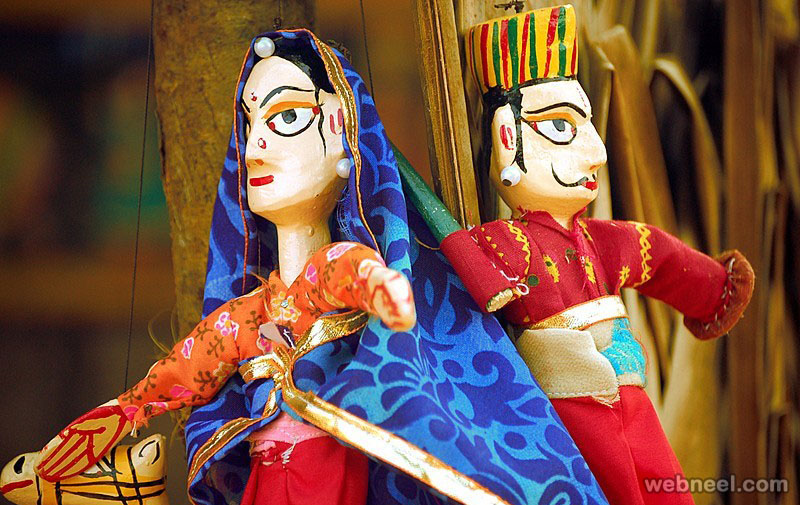
9: Clay animation or Claymation
If you like to play with clay then this is of the best forms of stop motion created in Claymation. In this Claymation, pieces of clay are moulded to create characters and based on the imagination of the animator, a story is unfolded. There are oil based and water based clays available. Sometimes the clay is moulded into free forms or filled up in a wire like structure called armature. The animated characters are kept in a set and with only short movements, the whole scene is film.
10. Zoetrope Animation
The zoetrope is one of several animation toys which were invented in the 19th century, as people experimented with ways to make moving pictures. It was invented in 1834 by William George Horner, and is one of the early forms of animations. Some still images are drawn on a drum and when turned in a circular way, you have an illusion of movement. The visual effect created by a zoetrope is still used today to create animated GIFs.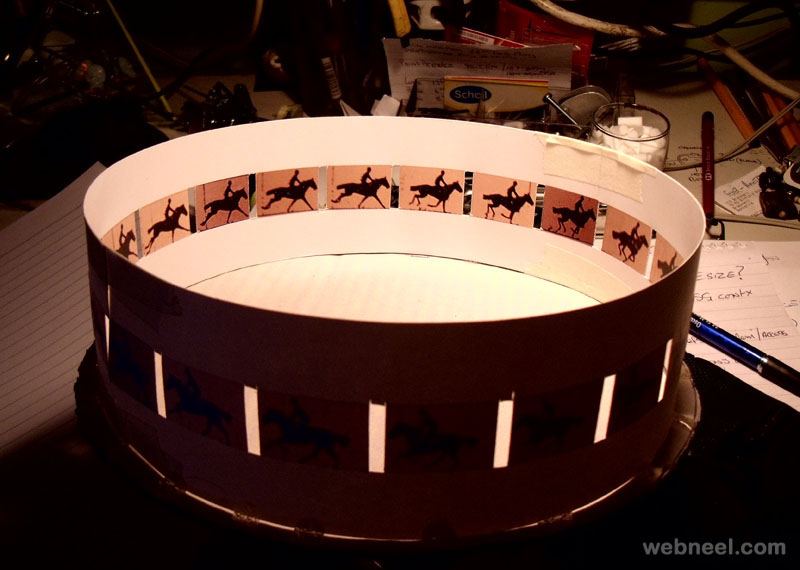
11. Cut-out animation
Cut – Out animation is probably one of the oldest forms of stop motion animations in the history of animation. The first cut-out animation was created by LotteReiniger in 1926 and it was named “The Adventures of Prince Achmed”. She used quite detailed paper silhouettes to convey a beautiful story. In this method paper cut outs are moved under the camera lens to say a story. Ever since the evolution of computers, it was much easier to introduce the computerised cut images in a queue.
12. Sand Animation
This technique is messy as you will have to get your hands dirty with sand. A lit glass table is used as a canvas and the animator creates animation by moving the sand in certain directions and yes you guessed it right, animators have to constantly erase their creations to create another scene. The whole process is photographed and then during post production, they are merged to show the sand animation. Even though it takes hours to complete the animation, the end creation will truly blow your mind away.
13. Typography Animation
Typography is all about font faces and letters and animation is anything that is in motion, well a combination of text in motion is known as typography animation. Typography animation is widely used during the titles part of a movie. If you have a love for the font faces and types, then one must watch the stop motion typhography animation created by Barrett Forest called the “The Atlantic”. It’s so easy to create new kinds of font face by using softwares such as Fontlab.
14. Paint-on-glass animation
In this technique, slow drying paints are used on a glass canvas, which allows the animator to manipulate the art and photograph them simultaneously. Sometimes turpentine is used in the paints, which makes it easier for the animator to work on the paintings. It’s tough and laborious task as you have to paint on glass, take photographs and then create another scene which is then blended together in the post production, to give an animated version of the painting.
15. Drawn-on-film animation
Drawn-on-film animation has been around from 1916, but most of the animations are lost from that period. This technique involves scratching, etching directly on an exposed film reel or alternatively can also be created in a dark room introducing the light in variations to create shadows which are permanently embedded on the film. Sometimes animators can just stick the black film reel on to a workboard and punch holes into them or stick just about anything on the film reel. This animation was one of the earliest forms of animation technique and probably one of the cheapest, since you just need a role of film, etching tools and a projector.
16. Experimental animation
Experimental animation is the art of combining two or more illogical paintings or art to create an animated scene. Different kinds of animation paintings are introduced at odd points which are totally irrelevant to each other. So the randomly introduced paintings create a different frame altogether in the animation process. Some animators have used a magnifying glass on paintings and multiple frames are captured to create an animation.
17. Erasure animation
Erasure animation uses 2d animation for motion graphics. Many popular charcoal erasure films have been created using this technique and one famous animator is William Kentridge. Photography and animation has to be done at every change to create a fluid motion in the animation film.
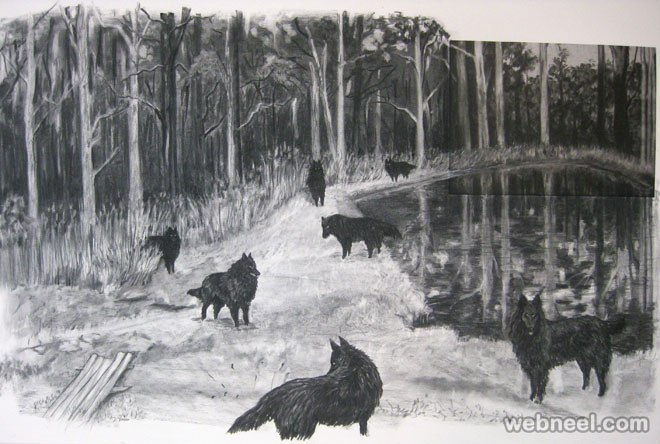
18. Pinscreen animation
A screen being pricked by thousands of headless pins is used to create pin screen animation. Alexandre Alexeieff and Claire Parker invented the pin screen animation technique in the 1930s. The two people used the pin screen to create Night on Bald Mountain. Once the pins are pricked, the screen is lit on one side, which casts shadows, based on the depth of the prick, the deeper the shadow. Night was the first animated film to use their pin screen, a 3×4 foot rectangle containing around 240,000 pins that move laterally in order to create different shadow lengths.
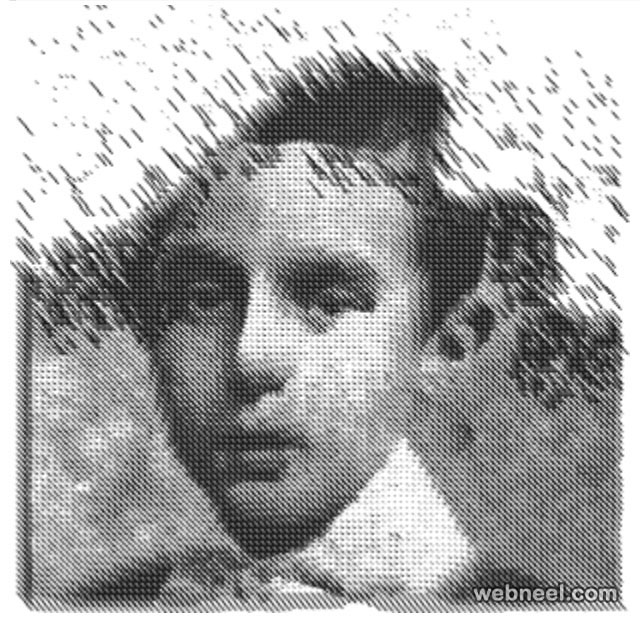
19. Flip book Animation
Even before the time of computers, animation was very much in practice. Artists used to carry a small flip book or flick book and draw a series of images, with little variation to the pictures, so when the book is flicked rapidly, you can see the series of images in a fluid motion, trying to show a scene. Flipbook animation is one of the oldest but fascinating kind of animation.
